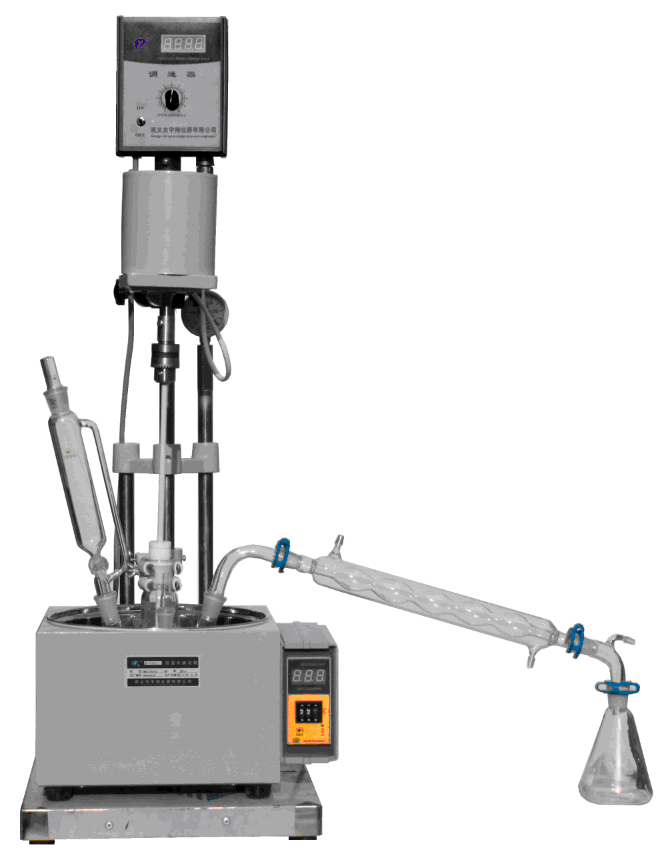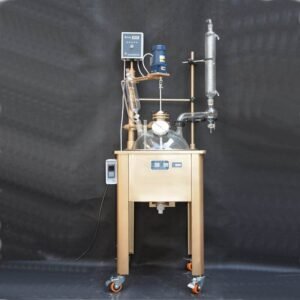For any laboratory relying on precise chemical reactions, the single glass reactor is an indispensable tool. However, like any other complex equipment, it is susceptible to issues that can disrupt experiments. To ensure smooth operations, having a Single Glass Reactor Troubleshooting Guide at hand is crucial for addressing and solving problems as soon as they arise. This guide outlines common troubleshooting tips and fixes for the most frequent issues faced by researchers and lab technicians.
By following a Single Glass Reactor Troubleshooting Guide, you can resolve minor malfunctions before they escalate, improving overall lab productivity and ensuring experiments are completed as planned. Whether you’re working with smaller 1L models or larger reactors, this guide offers insights tailored to different sizes and setups of single glass reactors.

Understanding Single Glass Reactors and Their Functionality
A single glass reactor is a crucial piece of laboratory equipment used for conducting controlled chemical reactions. Often crafted from durable borosilicate glass, these reactors are built to withstand high temperatures and chemical exposure. Despite their high-quality design, they can still encounter various operational issues. This Single Glass Reactor Troubleshooting Guide is designed to help you address these issues and restore your reactor to optimal working condition.
Common Issues in Single Glass Reactors
- Leakage Problems
Leakage is one of the most common issues encountered in single glass reactors. If not dealt with promptly, leaks can compromise your experiments, damage the equipment, or lead to dangerous chemical exposure.
Single Glass Reactor Troubleshooting Guide Tip: Regularly check seals, gaskets, and joints for wear and tear. If you notice a leak, replace the gasket and re-tighten the connections. Recalibrate the system to ensure tight seals for optimal performance. If the problem persists, consider consulting the manufacturer for more detailed guidance or replacement parts. For example, the 1L Single Layer Glass Reactor from EquilRxnLab offers a robust sealing system, reducing the likelihood of leaks. For more information, visit here.
- Temperature Fluctuations
Inconsistent heating or cooling can hinder chemical reactions, leading to inaccurate results. Single glass reactors are equipped with heating and cooling systems to maintain a constant reaction temperature, but these systems can fail over time.
Single Glass Reactor Troubleshooting Guide Tip: Check the heating element for signs of damage. Ensure the temperature controller is calibrated correctly and that the reactor is connected to a consistent power supply. If the heating element is malfunctioning, it might need replacement. Maintaining these components regularly will help prevent this issue. The Single Glass Reactor Troubleshooting Guide recommends checking your system after each experiment to ensure it’s in top shape.
- Stirring Mechanism Malfunctions
A malfunctioning stirring mechanism can cause uneven mixing of the reagents in a single glass reactor, disrupting the experiment’s effectiveness. The stirrer motor or the stir bar might fail or become misaligned, leading to inconsistent mixing.
Single Glass Reactor Troubleshooting Guide Tip: Before every use, ensure the stir bar and motor are aligned and functioning correctly. If the stir bar doesn’t rotate smoothly, clean it and ensure there are no obstructions. If the motor has failed, check for faulty wiring or connections. A properly functioning stirring system is key to achieving accurate reactions in your single glass reactor.
- Pressure Build-Up Issues
In certain reactions, pressure can build up inside the reactor, especially when using volatile or highly reactive chemicals. A single glass reactor is designed with pressure relief systems to prevent dangerous overpressure situations, but malfunctions in the pressure relief valve or other safety features can lead to serious issues.
Single Glass Reactor Troubleshooting Guide Tip: Check the reactor’s pressure relief valve for blockages or malfunctions. If the valve is faulty, replace it immediately to prevent dangerous pressure build-up. Regularly inspect and calibrate safety systems to ensure they are functioning properly. Following the Single Glass Reactor Troubleshooting Guide will help you manage and prevent any pressure-related issues.
- Glass Breakage
Glass breakage is a risk in any laboratory setting, and single glass reactors are no exception. The reactor’s glass can crack or shatter due to improper handling, excessive pressure, or thermal shock.
Single Glass Reactor Troubleshooting Guide Tip: Always handle the reactor with care, especially when working with hot chemicals. If you notice any signs of stress or cracks in the glass, discontinue use immediately and replace the reactor. To avoid breakage, follow proper cleaning and handling procedures as outlined in your reactor’s manual.
- Contamination of Reaction Mixture
Contamination can occur in single glass reactors if foreign particles or chemicals from previous reactions remain inside the vessel. This is especially problematic in experiments requiring high purity.
Single Glass Reactor Troubleshooting Guide Tip: After each use, clean the reactor thoroughly to remove any remaining residue. Pay special attention to the seals, joints, and the stirring mechanism, as these areas are prone to residue build-up. A regular cleaning schedule is critical to maintaining a contamination-free environment in your single glass reactor.
Preventive Maintenance and Regular Inspections
To reduce the frequency of issues, regular preventive maintenance is crucial. The Single Glass Reactor Troubleshooting Guide recommends the following best practices:
- Regularly check seals and gaskets: Replacing worn-out seals and gaskets will prevent leaks and ensure optimal performance.
- Thoroughly clean after every use: Ensure no chemical residues are left behind to avoid contamination.
- Inspect heating and cooling systems: Ensure that your temperature control systems are calibrated and functioning correctly.
- Lubricate the stirring mechanism: Regular lubrication will ensure smooth operation of the stirring system.
- Check pressure relief valves: Regular inspection and calibration will prevent overpressure situations.
Conclusion
Having a reliable Single Glass Reactor Troubleshooting Guide is an essential part of maintaining the functionality of your reactor and preventing costly downtime. By following the troubleshooting tips outlined above, you can resolve common issues with your single glass reactor quickly and efficiently. Regular maintenance and timely repairs are essential for keeping your reactor in optimal condition and ensuring the success of your experiments.
For those looking for a reliable single glass reactor, EquilRxnLab offers a range of high-quality products, including the 1L Single Layer Glass Reactor. For more details, visit here.
Stay informed and up to date with the latest reactor solutions by following EquilRxnLab on YouTube, Instagram, and Facebook.
Explore additional product details and technical resources in the EquilRxnLab catalog.



